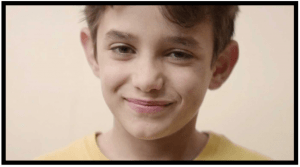The Beauty in the Disaster of Capernaum
A person can learn a lot about not only about different forms of film techniques but as well as the interpretation of life in third world countries for people young and old in the film Capernaum
produced in 2018 by Nadine Labaki.
The film carries a continuous theme of sorrow and the quality of life for a child in living situations they have little to no control over. The main
character Zain is a boy around the age of 12 that does not enjoy life the way a child should. He has extensive burdens upon himself in a world that he cannot understand the meaning of. Through many difficult setbacks and tasks Zain ends up finding a way to better his life. By
looking at the film in a director’s standpoint it had been risky to document this type of cinematography. This risk comes from the depiction of the lives of the many undocumented people in this third world country. Knowing the risk that by having any type of input in creating the film could lead to deportation was a risk that the actors and everyone in the filmmaking process were willing to take and it very much so paid off in the end.
CINEMATOGRAPHY
The film is seen through a greyscale, figuratively and literally. There is a sort of grey type of filter that is overcasted on the film through the entire movie. This type of filter creates a greyscale view of the film and therefore enhances the sadness and despair that is a repeated theme in the film. Through this filter the weather always looks a little more dingy and the main character looks a little more colorless. Then to emphasize the youth of Zain almost every time he was shown it was from an upper angle looking down on him in order to make him appear smaller. The only times I believe he was shown in the lower angle to make him appear larger was when he was making bold decisions and being the fast mouthed quick witted little boy he was. As Zain would travel distances the longer the distance traveled the wider the camera shot. This made Zain seem so much smaller in the large world that felt as though it could eat someone as small as Zain.
STRUCTURE
The film Capernaum is not structured completely like traditional portrayal movies. Mainly a viewer is used to a sad beginning then a turning point in the movie where things begin to get better and finally a happy ending but this was not the ordeal in this particular film. Zain’s
life was full of unbearable strife that many adults today have never had to go through. He was so angry at the world he did not want to be a part of. His struggle carried an emotional toll on a viewer because he was just a child. A child that did not deserve the circumstances that life gave
him. He was miserable but he still had the courage to live, creating a rally for himself. The story of Zain’s difficulties involved other people as well. Some people made his life better but most made his life a lot more difficult than what it was before. Sometimes watching the film you
though his life couldn’t get worse, then it did. Seeing a child have to face poverty of this extent is difficult to stomach. Through him being the main character though the viewer cannot turn away until they find out if life gets better for him. Eventually his story ends with him being able to
achieve what he wanted in his short life by getting connections with people by means of his quick thinking. The film ends with the first genuine smile Zain has shown throughout the entire movie, ensuring the hope of the audience but not so much giving them reassurance.
Works Cited
Banerjee, Souranath. “Capernaum (2018).” Cinema Forensic, 18 July 2019,
www.cinemaforensic.com/capernaum-2018/.
